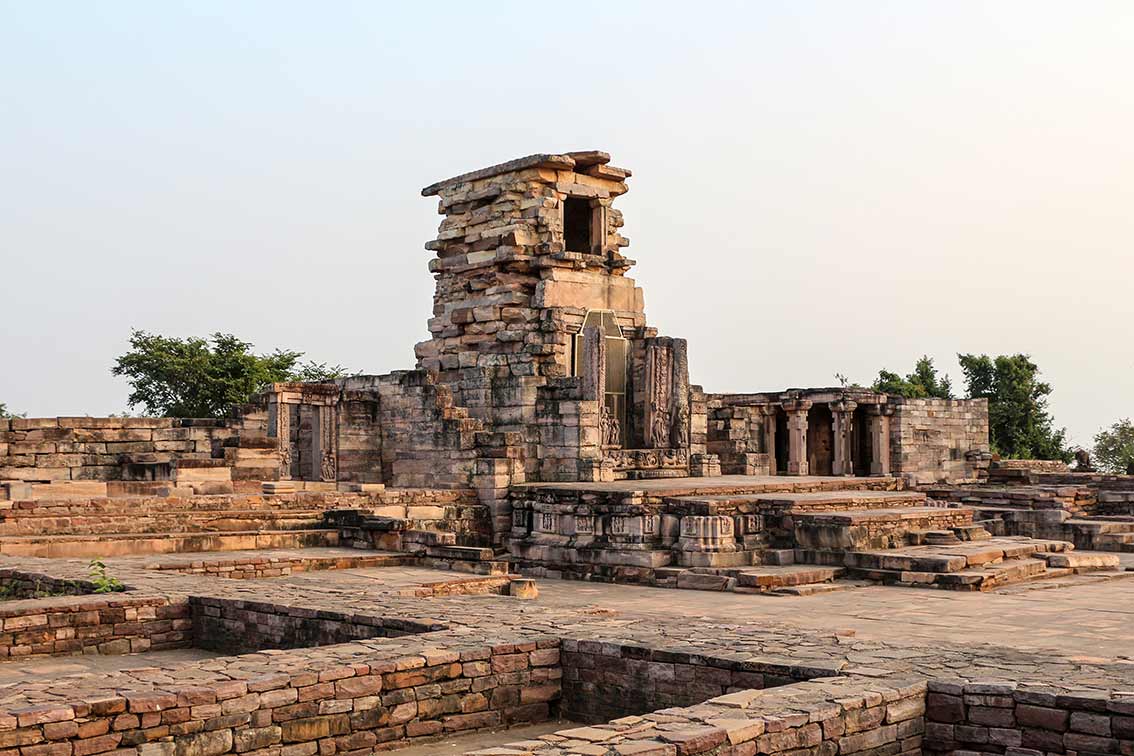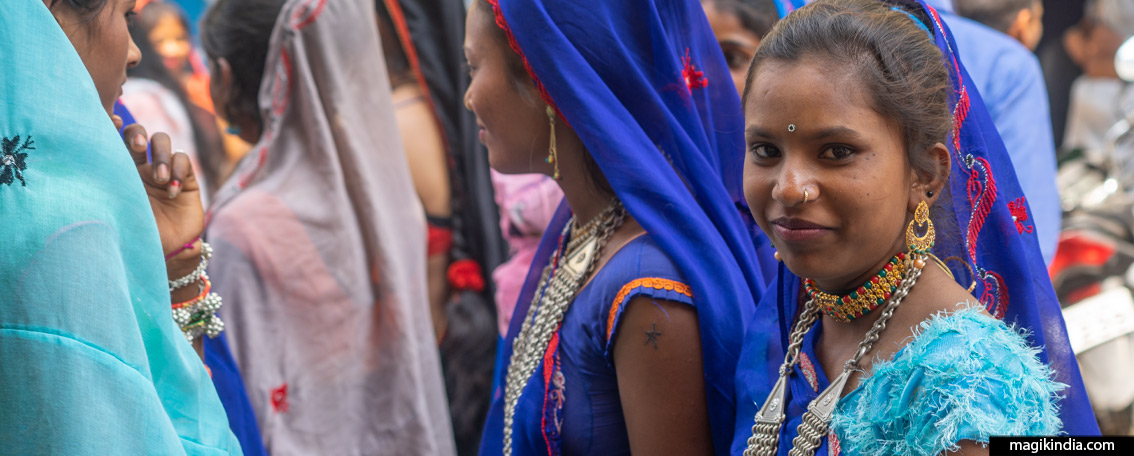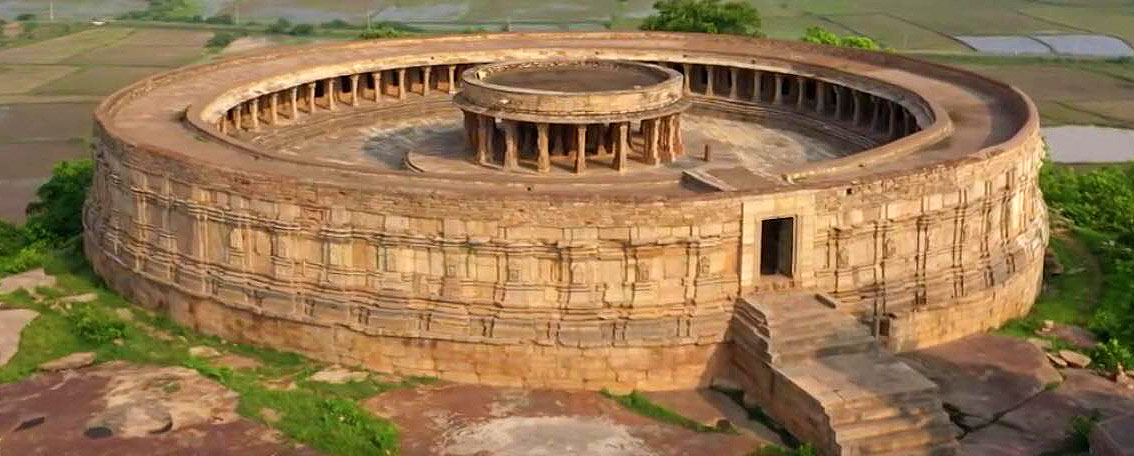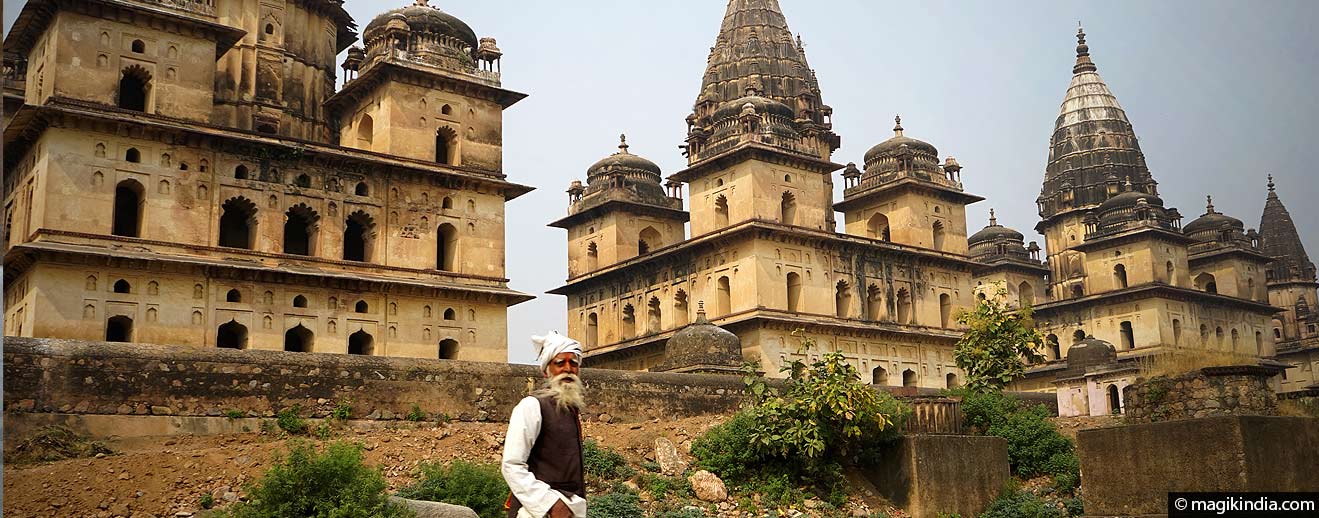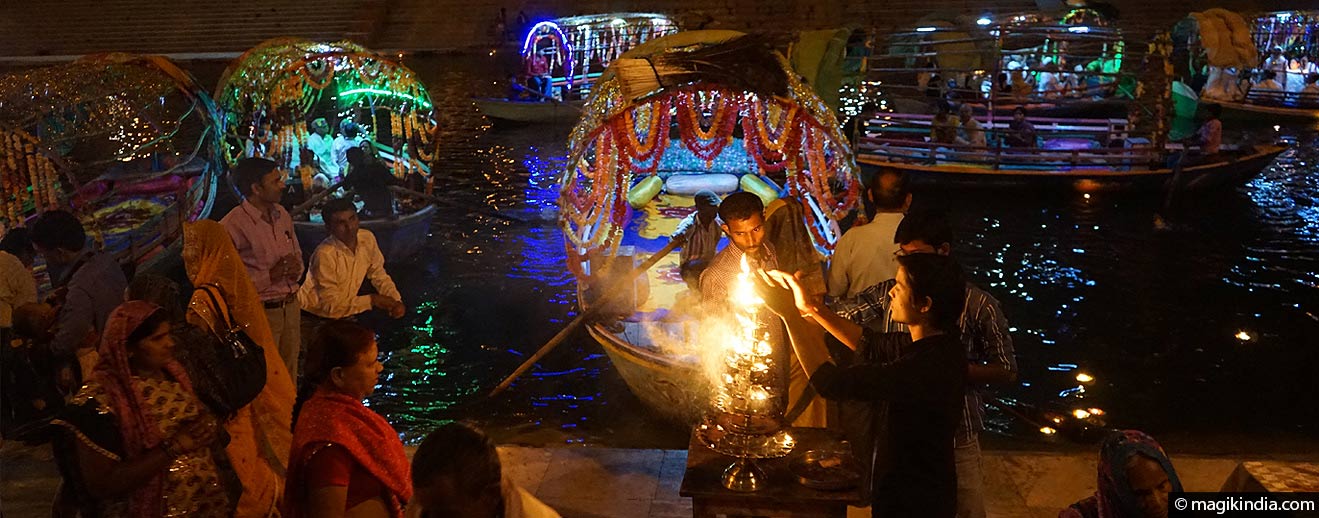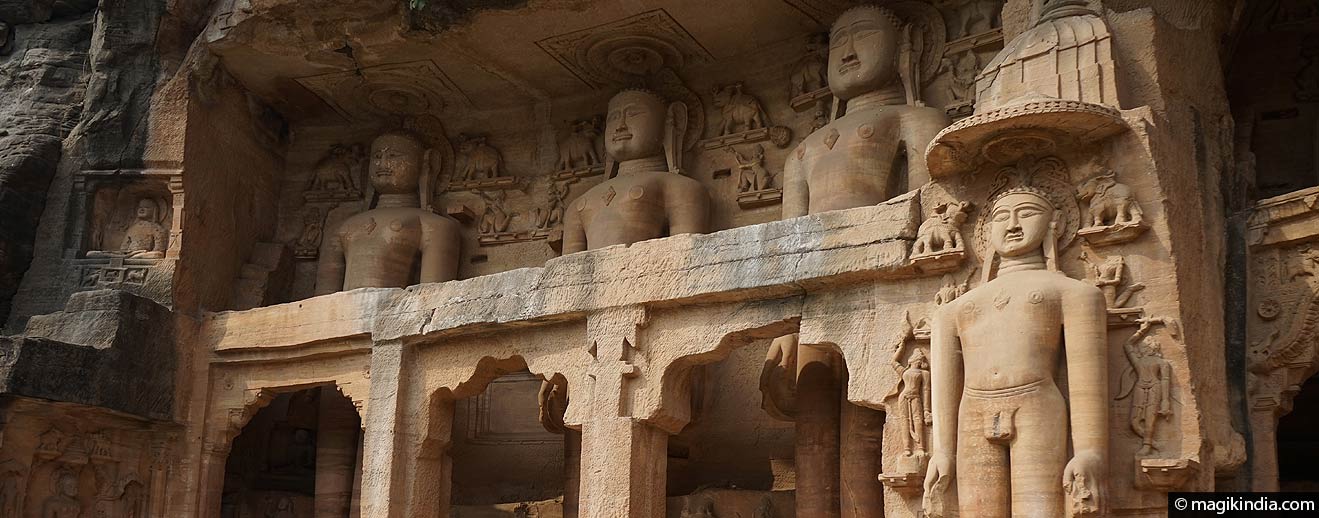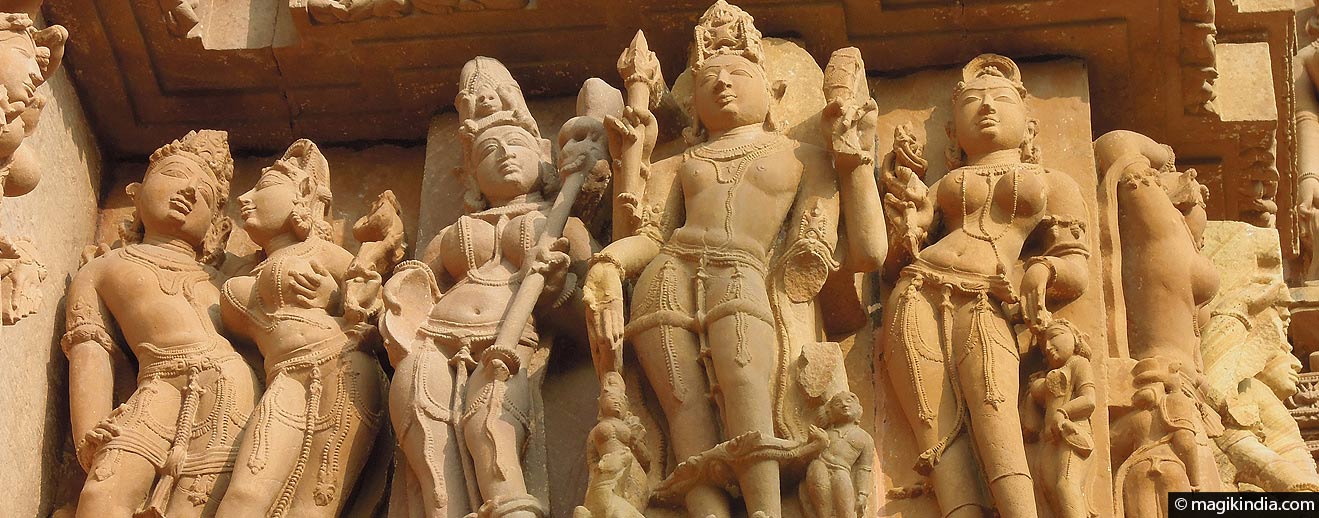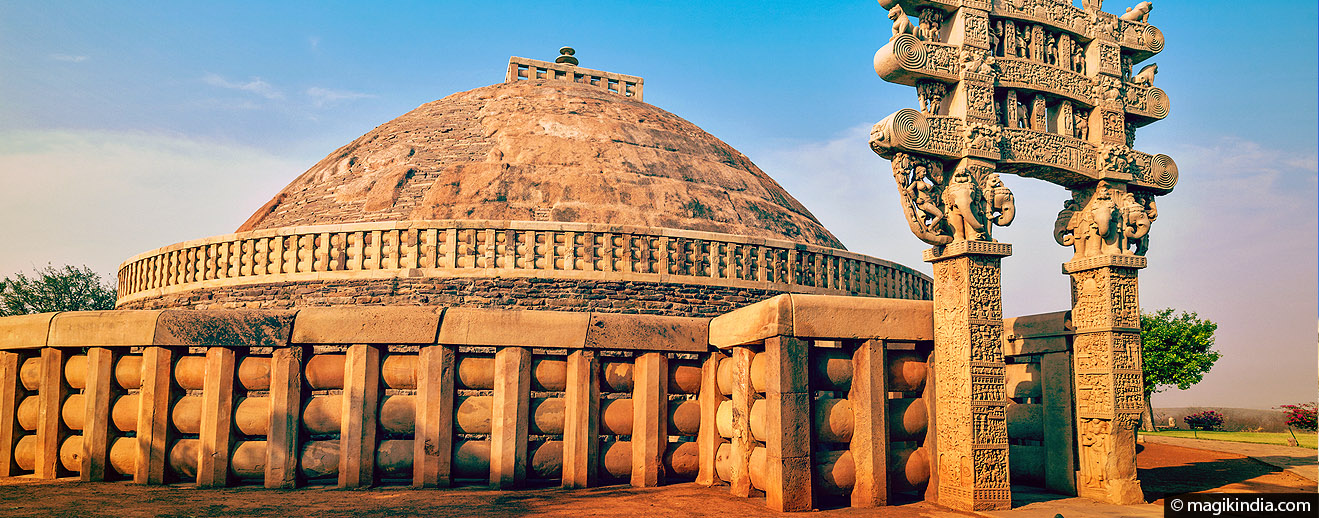
Sanchi, the oldest Buddhist sanctuary in India
Sanchi, a small village 46km northeast of Bhopal, is famous for its splendid group of Buddhist monuments, some of which date back to the 3rd century BCE. It is the oldest Buddhist sanctuary in existence and remained a major centre of Buddhism in India until the 12th century.
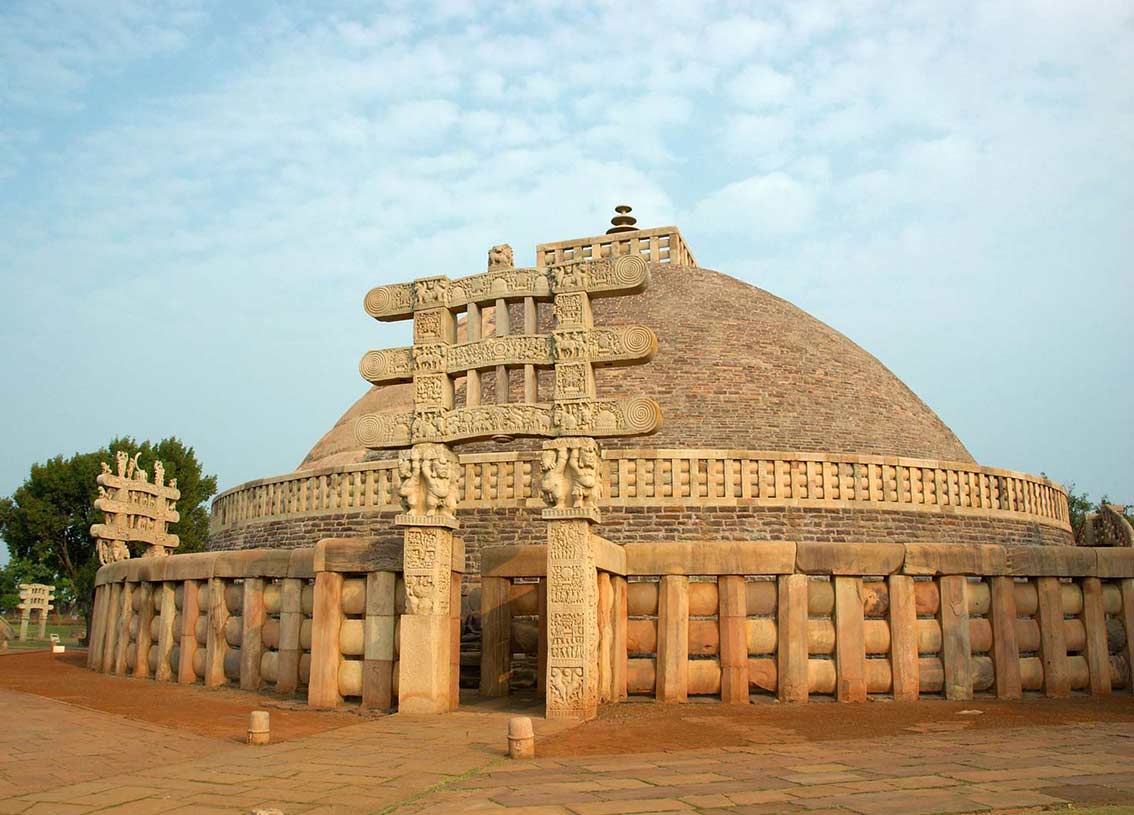
These Buddhist monuments – stupas, a monolithic pillar, palaces, temples and monasteries in various states of repair – bear witness to the emergence and development of Buddhist art and architecture across more than 1300 years, from the 3rd century BCE to the 12th century CE. This is almost the entire period of classical Buddhism in India.
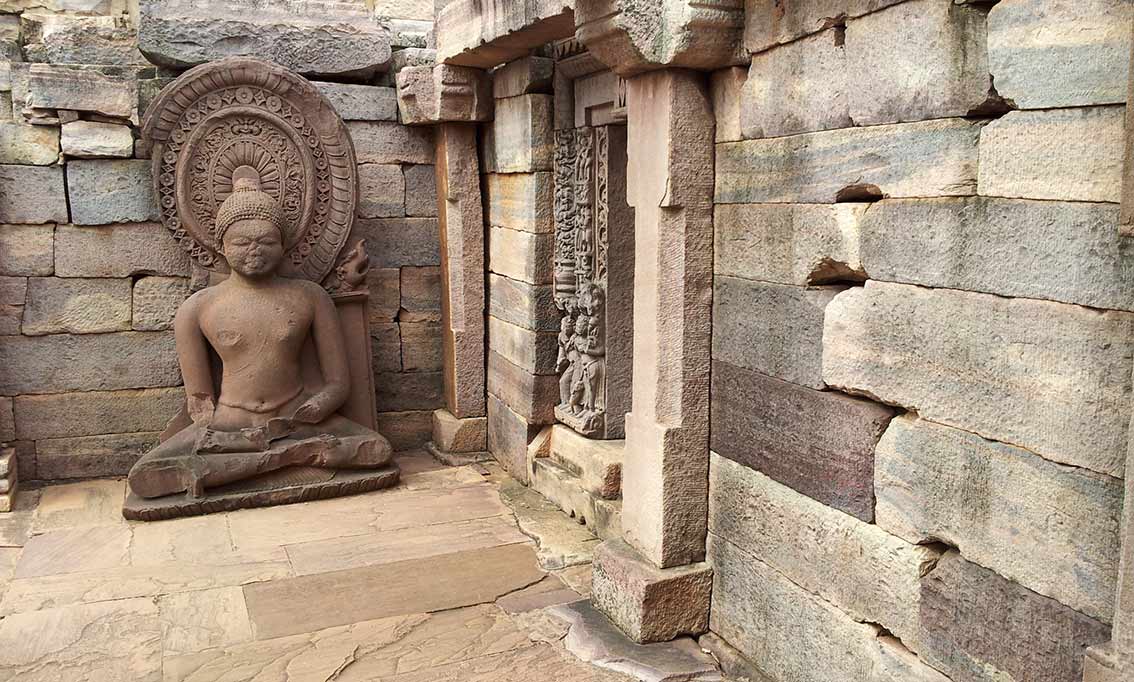
The religious site was founded by the Mauryan emperor Ashoka (c. 272-237BCE). First to be built, at the instigation of Ashoka’s wife who came from nearby Vidisha, were the maha stupa or large stupa on top of Sanchi Hill, a monastery and a monolithic pillar.
The tumulus of the great stupa was encased in masonry under the Satavahana dynasty in the late 1st century BCE.
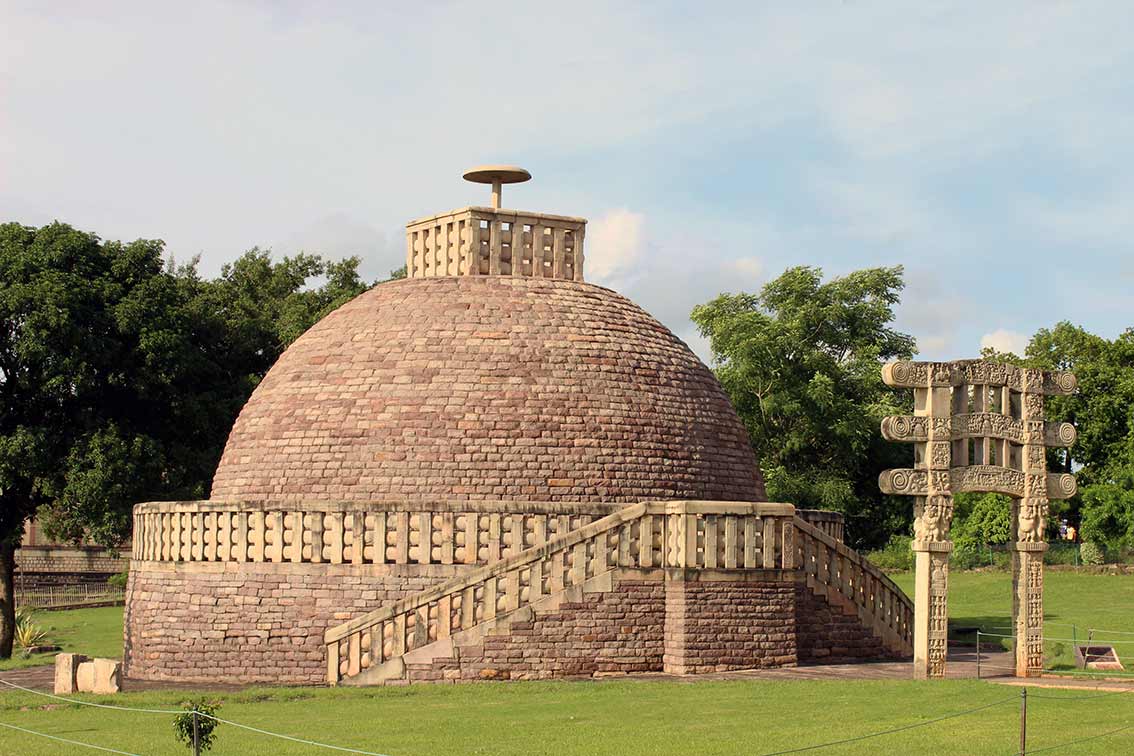
Stupas, monasteries and other Buddhist religious buildings continued to be built in Sanchi until the 12th century CE.
After the Hindu counter-reformation, the Sanchi monuments were forgotten and deteriorated for lack of maintenance.
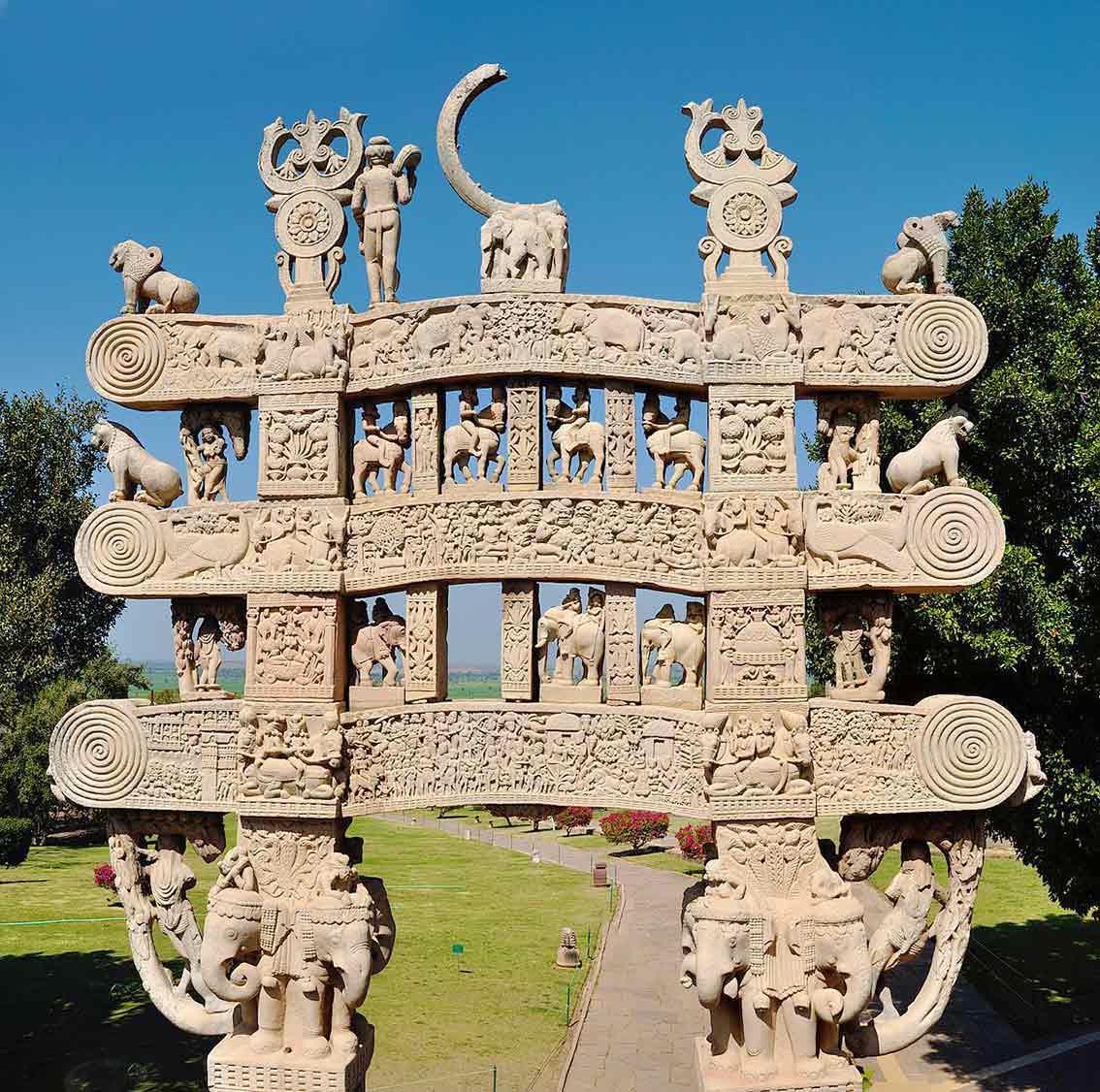
The site was rediscovered in 1818 by General Taylor of the British Army. Treasure hunters and amateur archaeologists then ravaged the area until 1881, when steps were taken to save the site. Between 1912 and 1919 the structures were restored to their current state under British archaeologist Sir John Marshall.
There are about 50 surviving monuments on Sanchi Hill including three major stupas and several temples and ruins.
The Sanchi group of Buddhist monuments has been on the UNESCO world heritage list since 1989.
